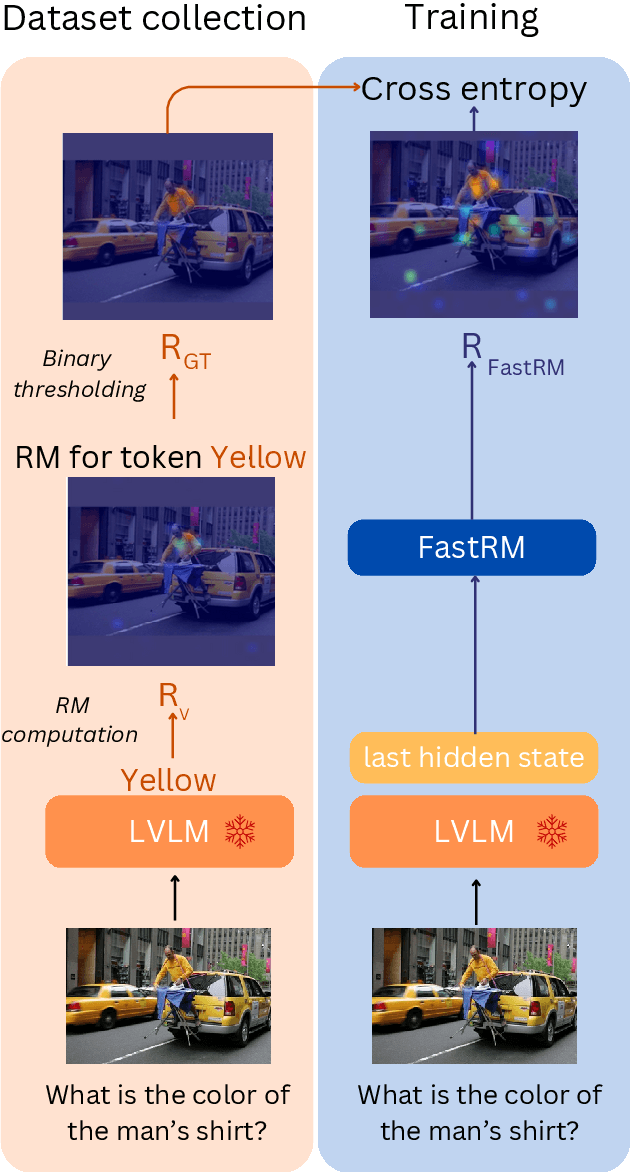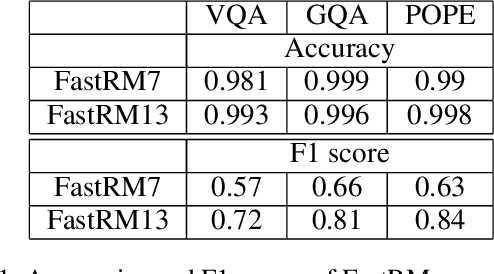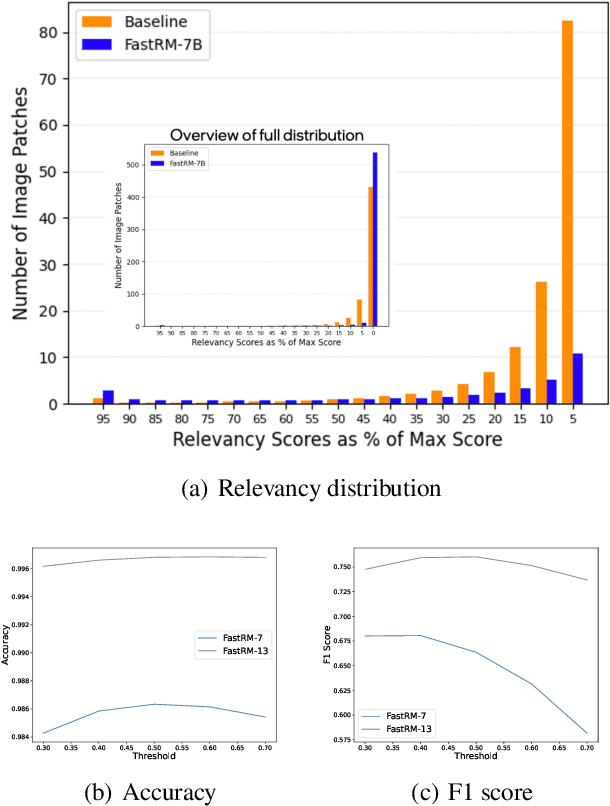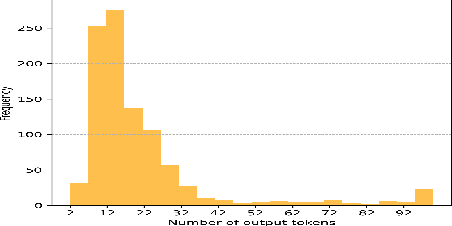Sayak Paul
From Reflection to Perfection: Scaling Inference-Time Optimization for Text-to-Image Diffusion Models via Reflection Tuning
Apr 22, 2025Abstract:Recent text-to-image diffusion models achieve impressive visual quality through extensive scaling of training data and model parameters, yet they often struggle with complex scenes and fine-grained details. Inspired by the self-reflection capabilities emergent in large language models, we propose ReflectionFlow, an inference-time framework enabling diffusion models to iteratively reflect upon and refine their outputs. ReflectionFlow introduces three complementary inference-time scaling axes: (1) noise-level scaling to optimize latent initialization; (2) prompt-level scaling for precise semantic guidance; and most notably, (3) reflection-level scaling, which explicitly provides actionable reflections to iteratively assess and correct previous generations. To facilitate reflection-level scaling, we construct GenRef, a large-scale dataset comprising 1 million triplets, each containing a reflection, a flawed image, and an enhanced image. Leveraging this dataset, we efficiently perform reflection tuning on state-of-the-art diffusion transformer, FLUX.1-dev, by jointly modeling multimodal inputs within a unified framework. Experimental results show that ReflectionFlow significantly outperforms naive noise-level scaling methods, offering a scalable and compute-efficient solution toward higher-quality image synthesis on challenging tasks.
FiVL: A Framework for Improved Vision-Language Alignment
Dec 19, 2024



Abstract:Large Vision Language Models (LVLMs) have achieved significant progress in integrating visual and textual inputs for multimodal reasoning. However, a recurring challenge is ensuring these models utilize visual information as effectively as linguistic content when both modalities are necessary to formulate an accurate answer. We hypothesize that hallucinations arise due to the lack of effective visual grounding in current LVLMs. This issue extends to vision-language benchmarks, where it is difficult to make the image indispensable for accurate answer generation, particularly in vision question-answering tasks. In this work, we introduce FiVL, a novel method for constructing datasets designed to train LVLMs for enhanced visual grounding and to evaluate their effectiveness in achieving it. These datasets can be utilized for both training and assessing an LVLM's ability to use image content as substantive evidence rather than relying solely on linguistic priors, providing insights into the model's reliance on visual information. To demonstrate the utility of our dataset, we introduce an innovative training task that outperforms baselines alongside a validation method and application for explainability. The code is available at https://github.com/IntelLabs/fivl.
A Noise is Worth Diffusion Guidance
Dec 05, 2024
Abstract:Diffusion models excel in generating high-quality images. However, current diffusion models struggle to produce reliable images without guidance methods, such as classifier-free guidance (CFG). Are guidance methods truly necessary? Observing that noise obtained via diffusion inversion can reconstruct high-quality images without guidance, we focus on the initial noise of the denoising pipeline. By mapping Gaussian noise to `guidance-free noise', we uncover that small low-magnitude low-frequency components significantly enhance the denoising process, removing the need for guidance and thus improving both inference throughput and memory. Expanding on this, we propose \ours, a novel method that replaces guidance methods with a single refinement of the initial noise. This refined noise enables high-quality image generation without guidance, within the same diffusion pipeline. Our noise-refining model leverages efficient noise-space learning, achieving rapid convergence and strong performance with just 50K text-image pairs. We validate its effectiveness across diverse metrics and analyze how refined noise can eliminate the need for guidance. See our project page: https://cvlab-kaist.github.io/NoiseRefine/.
FastRM: An efficient and automatic explainability framework for multimodal generative models
Dec 02, 2024



Abstract:While Large Vision Language Models (LVLMs) have become masterly capable in reasoning over human prompts and visual inputs, they are still prone to producing responses that contain misinformation. Identifying incorrect responses that are not grounded in evidence has become a crucial task in building trustworthy AI. Explainability methods such as gradient-based relevancy maps on LVLM outputs can provide an insight on the decision process of models, however these methods are often computationally expensive and not suited for on-the-fly validation of outputs. In this work, we propose FastRM, an effective way for predicting the explainable Relevancy Maps of LVLM models. Experimental results show that employing FastRM leads to a 99.8% reduction in compute time for relevancy map generation and an 44.4% reduction in memory footprint for the evaluated LVLM, making explainable AI more efficient and practical, thereby facilitating its deployment in real-world applications.
LlamaDuo: LLMOps Pipeline for Seamless Migration from Service LLMs to Small-Scale Local LLMs
Aug 24, 2024Abstract:The widespread adoption of cloud-based proprietary large language models (LLMs) has introduced significant challenges, including operational dependencies, privacy concerns, and the necessity of continuous internet connectivity. In this work, we introduce an LLMOps pipeline, "LlamaDuo", for the seamless migration of knowledge and abilities from service-oriented LLMs to smaller, locally manageable models. This pipeline is crucial for ensuring service continuity in the presence of operational failures, strict privacy policies, or offline requirements. Our LlamaDuo involves fine-tuning a small language model against the service LLM using a synthetic dataset generated by the latter. If the performance of the fine-tuned model falls short of expectations, it is enhanced by further fine-tuning with additional similar data created by the service LLM. This iterative process guarantees that the smaller model can eventually match or even surpass the service LLM's capabilities in specific downstream tasks, offering a practical and scalable solution for managing AI deployments in constrained environments. Extensive experiments with leading edge LLMs are conducted to demonstrate the effectiveness, adaptability, and affordability of LlamaDuo across various downstream tasks. Our pipeline implementation is available at https://github.com/deep-diver/llamaduo.
Margin-aware Preference Optimization for Aligning Diffusion Models without Reference
Jun 10, 2024Abstract:Modern alignment techniques based on human preferences, such as RLHF and DPO, typically employ divergence regularization relative to the reference model to ensure training stability. However, this often limits the flexibility of models during alignment, especially when there is a clear distributional discrepancy between the preference data and the reference model. In this paper, we focus on the alignment of recent text-to-image diffusion models, such as Stable Diffusion XL (SDXL), and find that this "reference mismatch" is indeed a significant problem in aligning these models due to the unstructured nature of visual modalities: e.g., a preference for a particular stylistic aspect can easily induce such a discrepancy. Motivated by this observation, we propose a novel and memory-friendly preference alignment method for diffusion models that does not depend on any reference model, coined margin-aware preference optimization (MaPO). MaPO jointly maximizes the likelihood margin between the preferred and dispreferred image sets and the likelihood of the preferred sets, simultaneously learning general stylistic features and preferences. For evaluation, we introduce two new pairwise preference datasets, which comprise self-generated image pairs from SDXL, Pick-Style and Pick-Safety, simulating diverse scenarios of reference mismatch. Our experiments validate that MaPO can significantly improve alignment on Pick-Style and Pick-Safety and general preference alignment when used with Pick-a-Pic v2, surpassing the base SDXL and other existing methods. Our code, models, and datasets are publicly available via https://mapo-t2i.github.io
Getting it Right: Improving Spatial Consistency in Text-to-Image Models
Apr 01, 2024Abstract:One of the key shortcomings in current text-to-image (T2I) models is their inability to consistently generate images which faithfully follow the spatial relationships specified in the text prompt. In this paper, we offer a comprehensive investigation of this limitation, while also developing datasets and methods that achieve state-of-the-art performance. First, we find that current vision-language datasets do not represent spatial relationships well enough; to alleviate this bottleneck, we create SPRIGHT, the first spatially-focused, large scale dataset, by re-captioning 6 million images from 4 widely used vision datasets. Through a 3-fold evaluation and analysis pipeline, we find that SPRIGHT largely improves upon existing datasets in capturing spatial relationships. To demonstrate its efficacy, we leverage only ~0.25% of SPRIGHT and achieve a 22% improvement in generating spatially accurate images while also improving the FID and CMMD scores. Secondly, we find that training on images containing a large number of objects results in substantial improvements in spatial consistency. Notably, we attain state-of-the-art on T2I-CompBench with a spatial score of 0.2133, by fine-tuning on <500 images. Finally, through a set of controlled experiments and ablations, we document multiple findings that we believe will enhance the understanding of factors that affect spatial consistency in text-to-image models. We publicly release our dataset and model to foster further research in this area.
DiffuseKronA: A Parameter Efficient Fine-tuning Method for Personalized Diffusion Models
Feb 28, 2024



Abstract:In the realm of subject-driven text-to-image (T2I) generative models, recent developments like DreamBooth and BLIP-Diffusion have led to impressive results yet encounter limitations due to their intensive fine-tuning demands and substantial parameter requirements. While the low-rank adaptation (LoRA) module within DreamBooth offers a reduction in trainable parameters, it introduces a pronounced sensitivity to hyperparameters, leading to a compromise between parameter efficiency and the quality of T2I personalized image synthesis. Addressing these constraints, we introduce \textbf{\textit{DiffuseKronA}}, a novel Kronecker product-based adaptation module that not only significantly reduces the parameter count by 35\% and 99.947\% compared to LoRA-DreamBooth and the original DreamBooth, respectively, but also enhances the quality of image synthesis. Crucially, \textit{DiffuseKronA} mitigates the issue of hyperparameter sensitivity, delivering consistent high-quality generations across a wide range of hyperparameters, thereby diminishing the necessity for extensive fine-tuning. Furthermore, a more controllable decomposition makes \textit{DiffuseKronA} more interpretable and even can achieve up to a 50\% reduction with results comparable to LoRA-Dreambooth. Evaluated against diverse and complex input images and text prompts, \textit{DiffuseKronA} consistently outperforms existing models, producing diverse images of higher quality with improved fidelity and a more accurate color distribution of objects, all the while upholding exceptional parameter efficiency, thus presenting a substantial advancement in the field of T2I generative modeling. Our project page, consisting of links to the code, and pre-trained checkpoints, is available at https://diffusekrona.github.io/.
PIXART-δ: Fast and Controllable Image Generation with Latent Consistency Models
Jan 10, 2024Abstract:This technical report introduces PIXART-{\delta}, a text-to-image synthesis framework that integrates the Latent Consistency Model (LCM) and ControlNet into the advanced PIXART-{\alpha} model. PIXART-{\alpha} is recognized for its ability to generate high-quality images of 1024px resolution through a remarkably efficient training process. The integration of LCM in PIXART-{\delta} significantly accelerates the inference speed, enabling the production of high-quality images in just 2-4 steps. Notably, PIXART-{\delta} achieves a breakthrough 0.5 seconds for generating 1024x1024 pixel images, marking a 7x improvement over the PIXART-{\alpha}. Additionally, PIXART-{\delta} is designed to be efficiently trainable on 32GB V100 GPUs within a single day. With its 8-bit inference capability (von Platen et al., 2023), PIXART-{\delta} can synthesize 1024px images within 8GB GPU memory constraints, greatly enhancing its usability and accessibility. Furthermore, incorporating a ControlNet-like module enables fine-grained control over text-to-image diffusion models. We introduce a novel ControlNet-Transformer architecture, specifically tailored for Transformers, achieving explicit controllability alongside high-quality image generation. As a state-of-the-art, open-source image generation model, PIXART-{\delta} offers a promising alternative to the Stable Diffusion family of models, contributing significantly to text-to-image synthesis.
Progressive Knowledge Distillation Of Stable Diffusion XL Using Layer Level Loss
Jan 05, 2024Abstract:Stable Diffusion XL (SDXL) has become the best open source text-to-image model (T2I) for its versatility and top-notch image quality. Efficiently addressing the computational demands of SDXL models is crucial for wider reach and applicability. In this work, we introduce two scaled-down variants, Segmind Stable Diffusion (SSD-1B) and Segmind-Vega, with 1.3B and 0.74B parameter UNets, respectively, achieved through progressive removal using layer-level losses focusing on reducing the model size while preserving generative quality. We release these models weights at https://hf.co/Segmind. Our methodology involves the elimination of residual networks and transformer blocks from the U-Net structure of SDXL, resulting in significant reductions in parameters, and latency. Our compact models effectively emulate the original SDXL by capitalizing on transferred knowledge, achieving competitive results against larger multi-billion parameter SDXL. Our work underscores the efficacy of knowledge distillation coupled with layer-level losses in reducing model size while preserving the high-quality generative capabilities of SDXL, thus facilitating more accessible deployment in resource-constrained environments.
 Add to Chrome
Add to Chrome Add to Firefox
Add to Firefox Add to Edge
Add to Edge